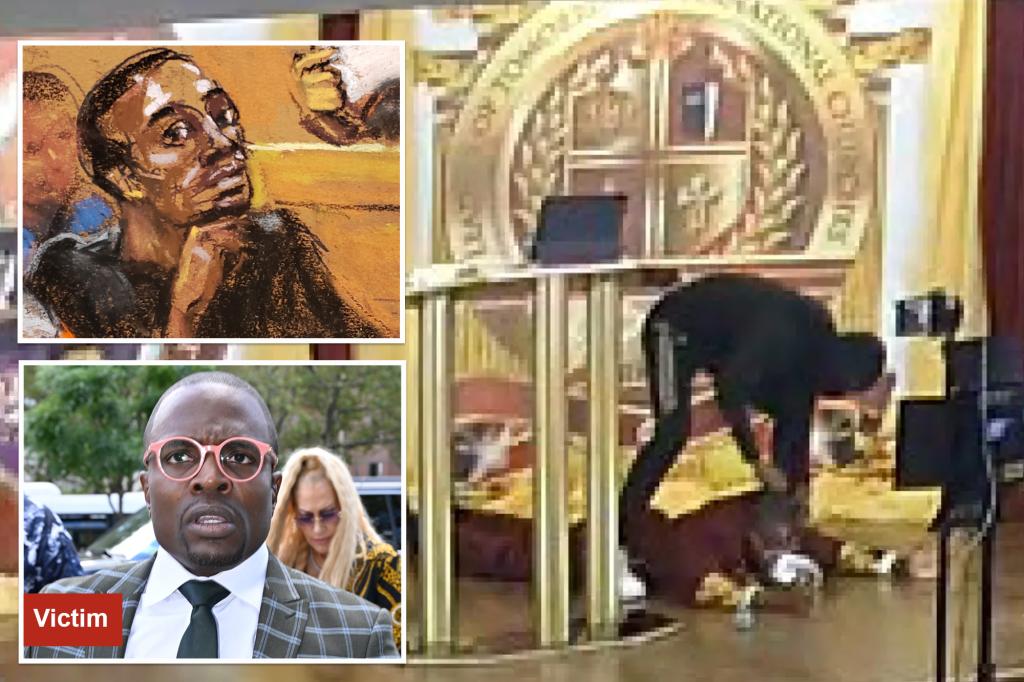In a shocking turn of events, a former convict, Say-Quan Pollack, received a seven-year sentence for robbing “Bling Bishop” Lamor Whitehead during a live-streamed sermon in a Brooklyn federal court. Pollack pleaded guilty to holding up Whitehead and his wife for $400,000 during a church service in July 2022. The robbery was caught on camera, making it a bold and brazen crime committed in a house of worship, terrorizing those in attendance, as stated by US Attorney for the Eastern District of New York Breon Peace.
Interestingly, Whitehead, the victim of the robbery, was sentenced to nine years in prison in an unrelated fraud case just a month before Pollack’s sentence. Whitehead, who had Mayor Eric Adams as a friend and mentor, was convicted of fraud, extortion, and other crimes for scamming an elderly parishioner’s mother out of $90,000 to spend on luxury items. This connection between the victim and the perpetrator created a complex situation in which Pollack’s lawyer, Gary Villanueva, attempted to argue that Whitehead’s crimes should result in a lighter sentence for the robber. However, Judge William Kuntz ultimately sentenced Pollack to the 87 months requested by prosecutors.
The disparity between the sentences of the two individuals involved in this case raises questions about the criminal justice system and the factors that influence sentencing decisions. Despite the severity of Pollack’s crime, which involved armed robbery in a religious setting, his sentence is ultimately shorter than that of Whitehead, who was involved in a fraudulent scheme targeting vulnerable individuals. This outcome highlights the complexities and nuances of criminal cases and the various factors that can impact sentencing decisions, including the nature of the crime, the criminal history of the individuals involved, and the circumstances surrounding the offense.
The case of Say-Quan Pollack and Lamor Whitehead serves as a reminder of the different paths individuals can take within the criminal justice system and the varied outcomes that can result from criminal activities. While Pollack will serve a shorter sentence for armed robbery, Whitehead will spend nine years in prison for his involvement in a fraudulent scheme. These divergent outcomes reflect the complexities of the legal system and the ways in which sentencing decisions are made based on a variety of factors. It also raises questions about issues of justice, fairness, and accountability within the criminal justice system.
Overall, the case of Say-Quan Pollack and Lamor Whitehead illuminates the complexities of the criminal justice system and the various factors that can influence sentencing decisions in criminal cases. Despite Pollack’s role in an armed robbery in a religious setting, his sentence is shorter than that of Whitehead, who was involved in a fraudulent scheme targeting vulnerable individuals. The differing outcomes in this case underscore the intricacies of criminal cases and the multifaceted nature of sentencing decisions, shedding light on the nuances and challenges that arise within the legal system.


